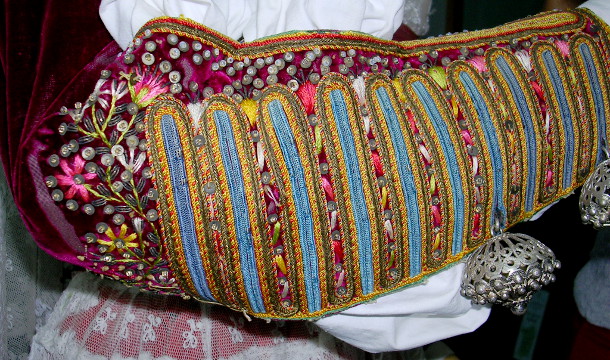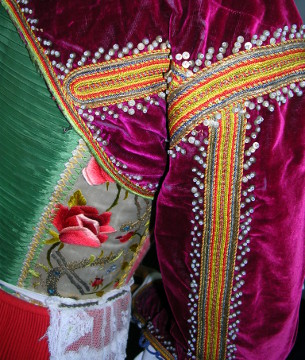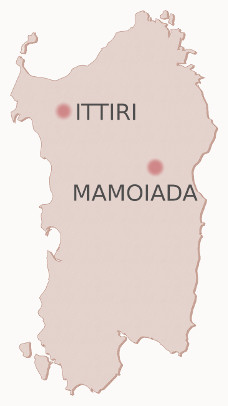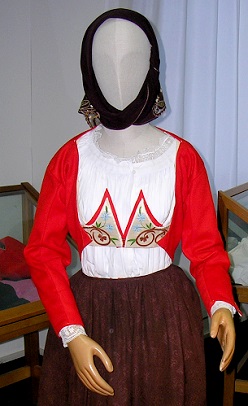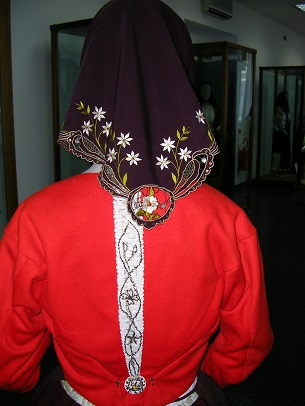Itinerary edited by the UNIVERSITY OF CAGLIARI 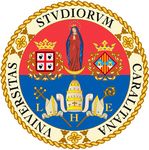

Anthropology is a term used to define the study of the many aspects of human life. The Sardinian Museum of Anthropology and Ethnography houses several biological findings. However, it is the cultural aspect that can provide an exhaustive picture of the human communities the museum is devoted to, thus contributing to a better understanding of their specific physical and historical aspects.
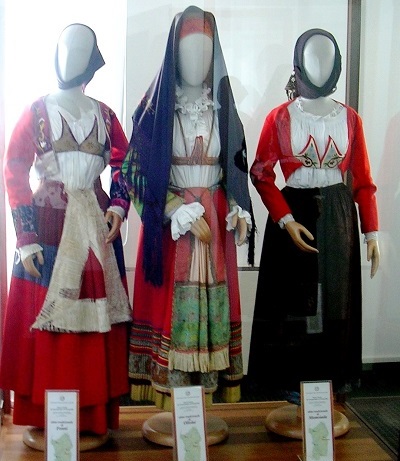
 Traditional Women’s Clothing: main features and elements
Traditional Women’s Clothing: main features and elements The blouse (kamisetta, brusa, franella, koprimbustu) is usually white with lace embroidered along the neckline and the edges of its long sleeves. Some blouses often feature more embroidered parts at the front, which are made of handmade or machine-made lace.
The corset (bustu, korpettu, korittu, kossu, pala) shows off the female figure and it can be thin and light in some versions. However, most models feature elaborate corsets adorned with ribbons, tassels and embroidered with silk, gold and silver threads.
The jacket (korittu, gippone, dzippone, vellada) covers the corset and usually has long sleeves that are richly decorated. It is open in the front, so that it is still possible to admire the costume underneath.
The textile used for the skirt (fardetta, bunneddha, gunneddha) is normally made of coarse woollen fabric or a softer woollen cloth in the villages of centre and north Sardinia. In the south, cotton is used for the skirts; in colder areas of the island, women wear more than one skirt.
Apron (deventali, antalene, cinta, panneddhu, panniananti)
Stockings (miggias, peunkos, piunkos) and shoes (buttinu, karkas, krapittas)
For instance, the size of the Sardinian traditional costumes provides clues to the physical features of some native populations, although this is limited to the last few centuries. The costumes were tailor-made and can therefore offer precise information regarding the owner’s size and height; while the style, colour and model of each item can point to the historical and geographical area and village it comes from. The fabrics mainly used to create these costumes were sheep wool (in colder villages) and cotton (in warmer areas). Cotton was usually used for all underwear, although raw silk was also used to make the headgear from Orgosolo. All textiles were coloured using natural products that were extracted from local plants.
A small collection of gardening and farming items is also displayed here, showing how the main working activities of the population were carried out. The Ex-Voto Collection also helps us understand how human life was affected by labour and illness.
